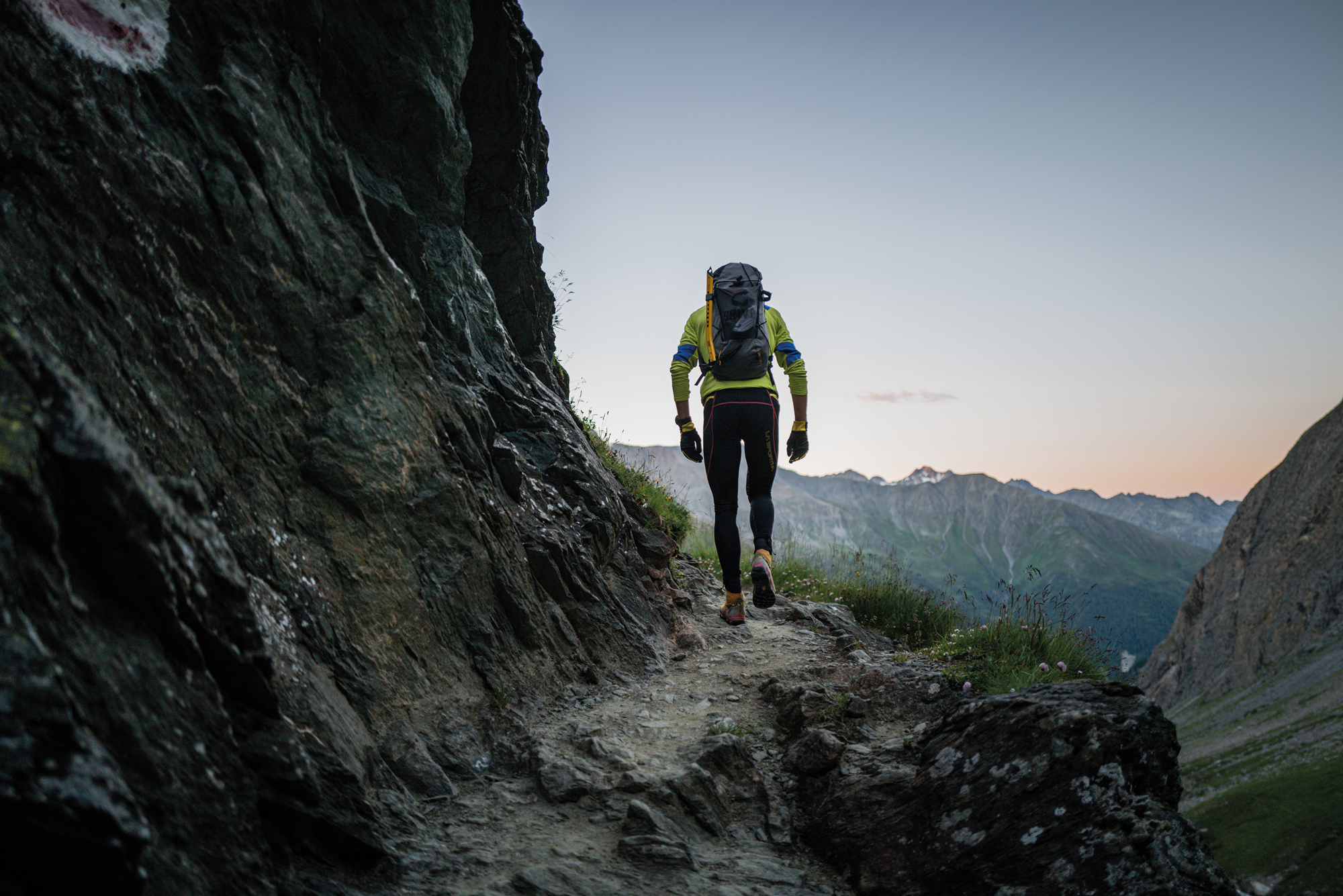By: Matteo Pavana
Photos: Phillip Reiter, Matteo Pavana
Nadir Maguet, the FKT’s Magician
Originally from Torgnon, Aosta Valley, Nadir Maguet is an athlete of Centro Sportivo Esercito. Last summer he established three new FKTs on three symbolic mountains of the Alps: Piz Bernina (via Biancograt, 2:44:13), Ortles (via Hintergrat, 1:43:12) and Grossglockner (via Stüdlgrat, 1:30:23). It is Nadir, the Magician, who tells us the background of this new venture.
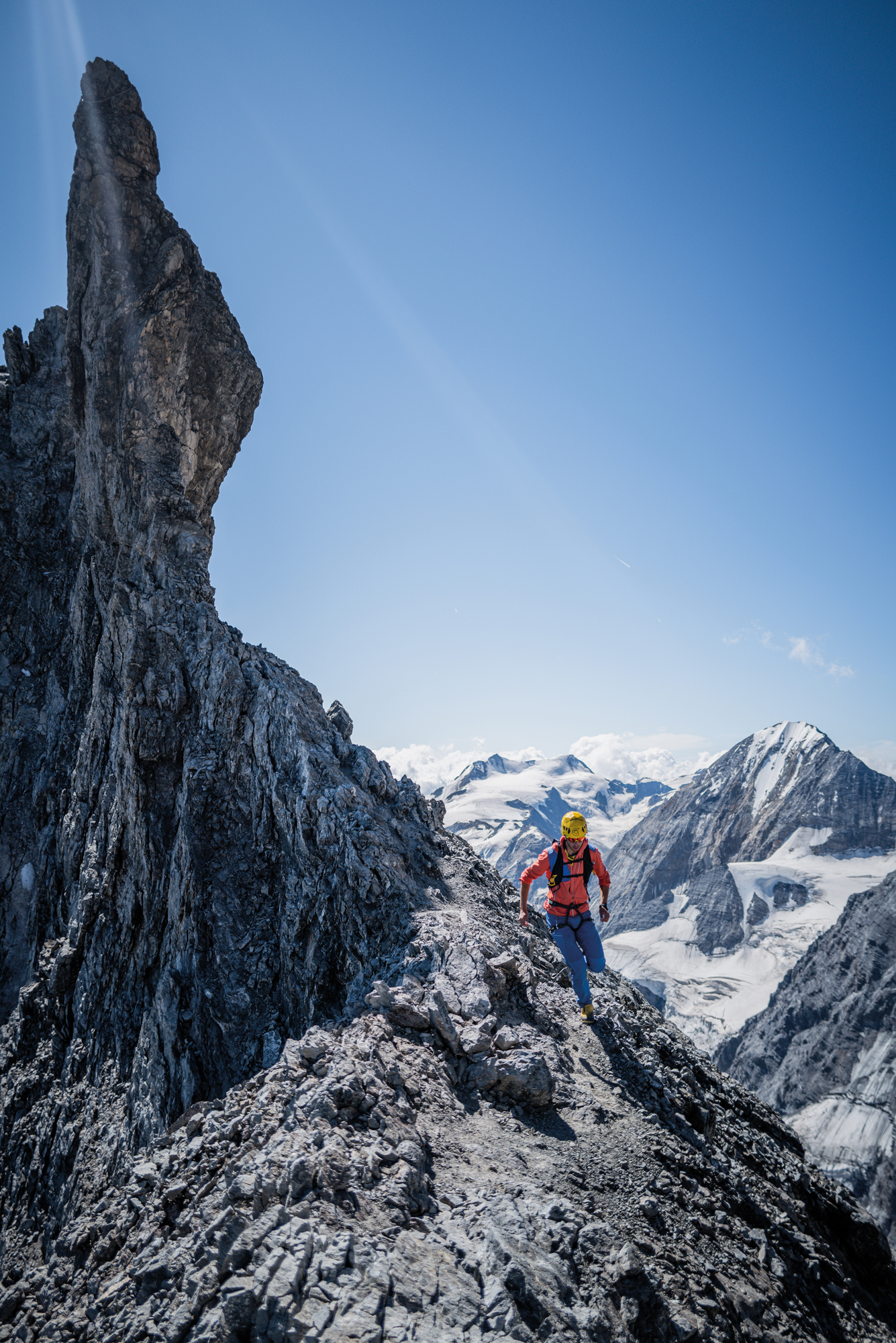
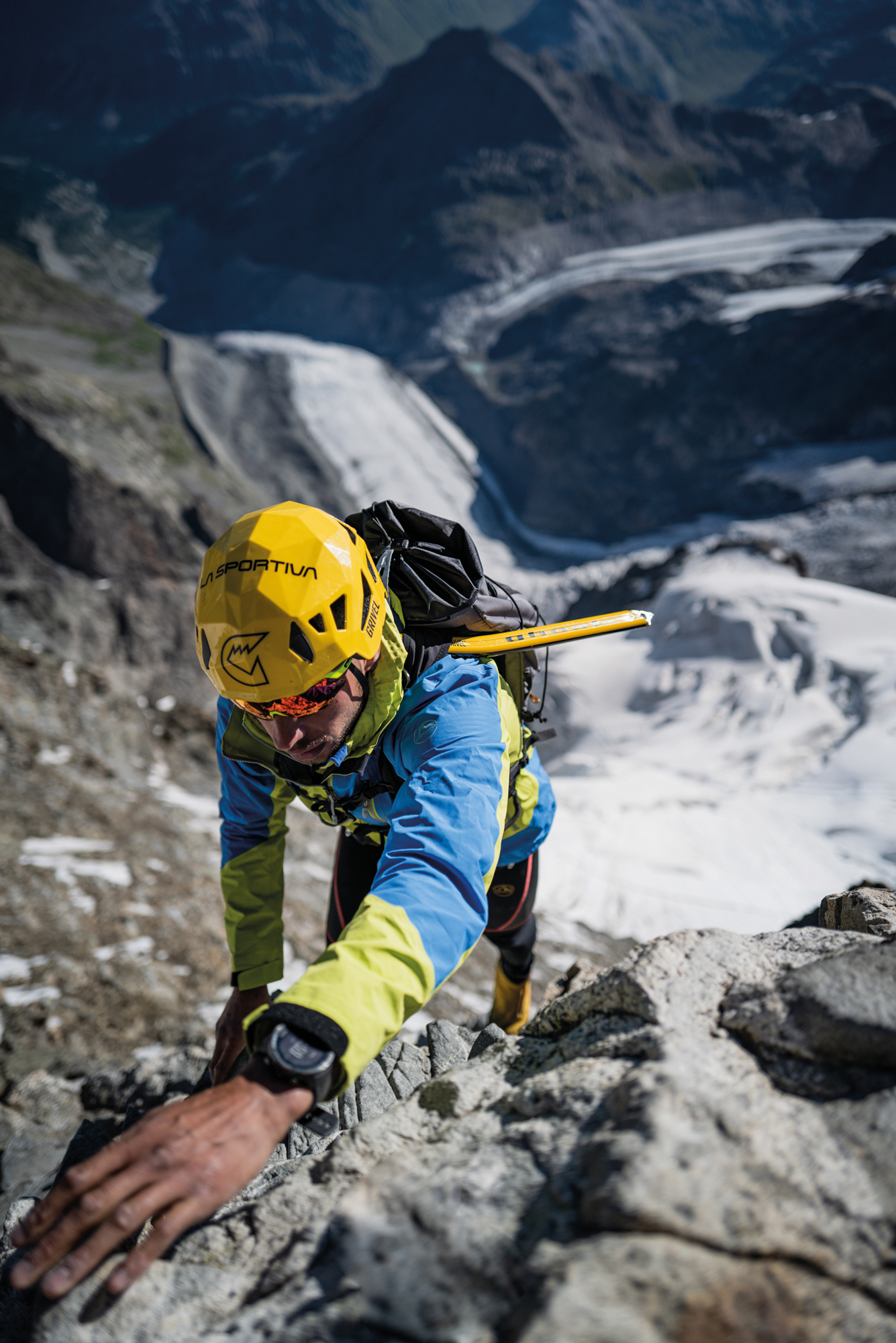
Explain to the layman the meaning and reason for establishing an FKT.
FKT is an acronym that in English stands for “Fastest Know Time”. It is not an official record, it is based on trust and on the data reported by the watch, in particular by the GPS track with the Intermediate times of performance. It is almost a certainty. FKT is a way to establish a chronometric time, whether it is an ascent and descent or only an ascent, as in my case. In the end, it is a stimulus for athletes to push themselves further.
Again for the layman… Who is Nadir Maguet, the Magician?
I am a guy, no longer that young, who has been involved in competitive sports since childhood. I started with cross-country skiing at the age of 2 thanks to my dad. I tried different sports: biathlon and cycling in the first place. Only when I came across ski mountaineering I found my true nature: fully experiencing the mountains in a freer, wilder, faster way. I love to enjoy the mountains, especially in solitude. Having time exclusively for myself makes me feel good, especially when I can escape the hustle and bustle of the everyday life.
Is it possible to say that you are having a change of course? Which seas would you like to sail in?
I wouldn’t really say a change of course, but rather a natural transformation of my being as an athlete. I have never spent much time on a particular discipline, but I have always varied as much as possible according to my passions and to what I like to do. I know I am in a phase of my career where I have very clear ideas about who I will be in 5/10 years. And versatility in this sense has always played a fundamental role: in addition to always keeping me motivated in what I do, it makes me feel happy. Monotony is boring.

Tell us about your summer project.
It was born from the passion that I have rediscovered in recent years of going to the mountains and practicing mountaineering. It was above all thanks to François Cazzanelli, my mentor in this field, that I was able to absorb the passion in imagining, elaborating and carrying out projects in the mountains. With François I realized that, by combining my athletic characteristics and my technical skills in the mountains, there would be room to create something different, something that would go beyond myself. And these FKTs were real tests to see if in the future I would be able to challenge myself on much more difficult goals. It was a summer full of satisfactions, a summer that showed me what I really like to do.
How much mental and physical effort does it take to set these records? And what is the organizational effort?
All of them in equal measure, I would say. Organizing means planning every single FKT, both from a material, meteorological, communicative point of view, etc. Mental effort, on the other hand, takes place every time there is a decision to be made, there is always the question of whether what I am doing is right or wrong. This effort is also found during the attempt to break the record, as those mountains require mountaineering skills. For example, there are stretches where being alone without a climbing partner requires a lot of concentration and attention. Physical effort, on the other hand, accompanies me every single day of training to prepare for this type of goal. After all, the day of the attempt is only the moment in which we express ourselves 100% after months of preparation.
Were there people who helped you?
One aspect that I like when you try your hand at a personal project like this is to create a circle of people who support you and accompany you in your challenge. For me they have been family and friends, that I totally trust. They supported me during the preparation and record attempt days. I take this opportunity to thank especially Robert Antonioli, Gianluca Vanzetta and Manfred Reichegger who sacrificed part of their time for me.
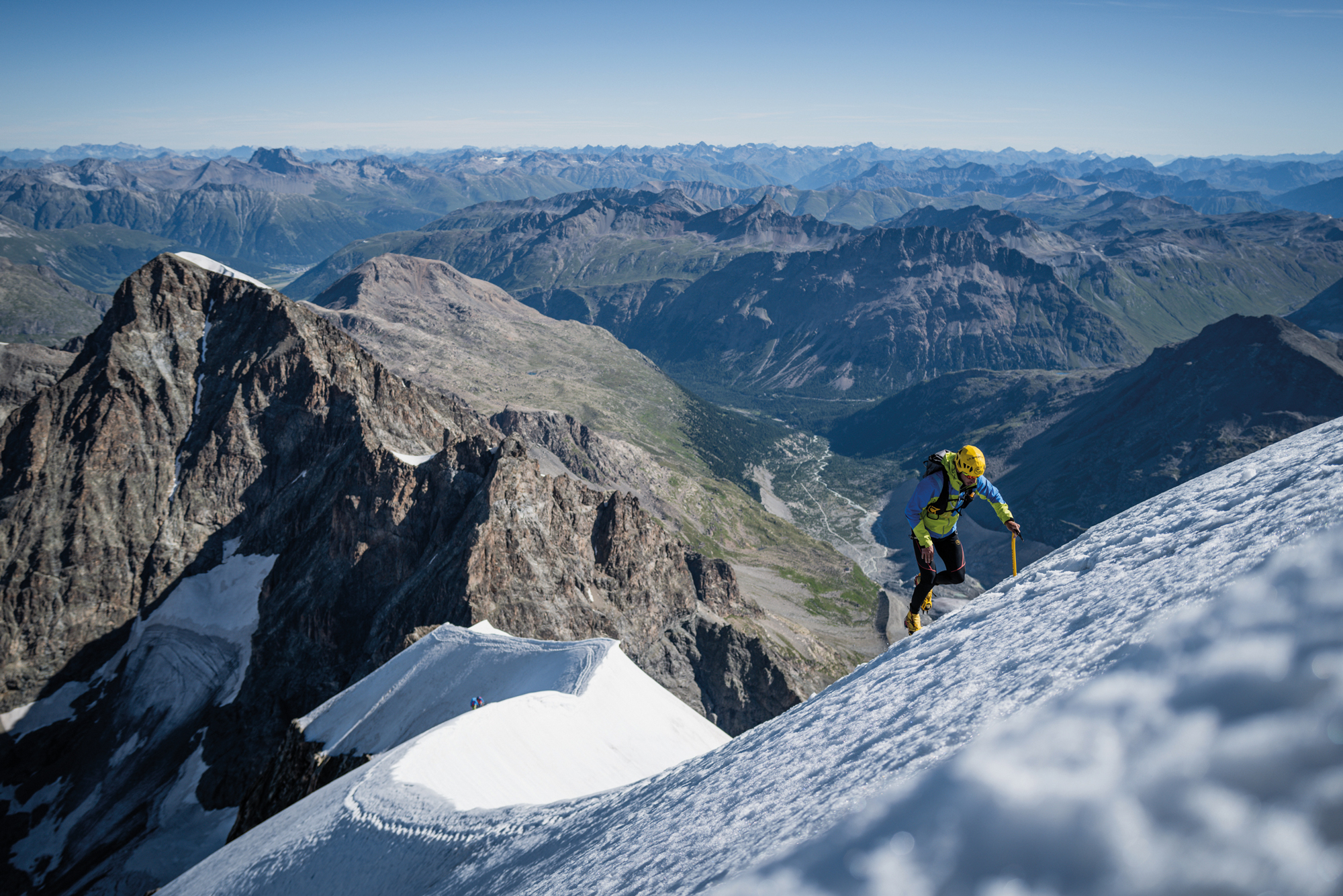
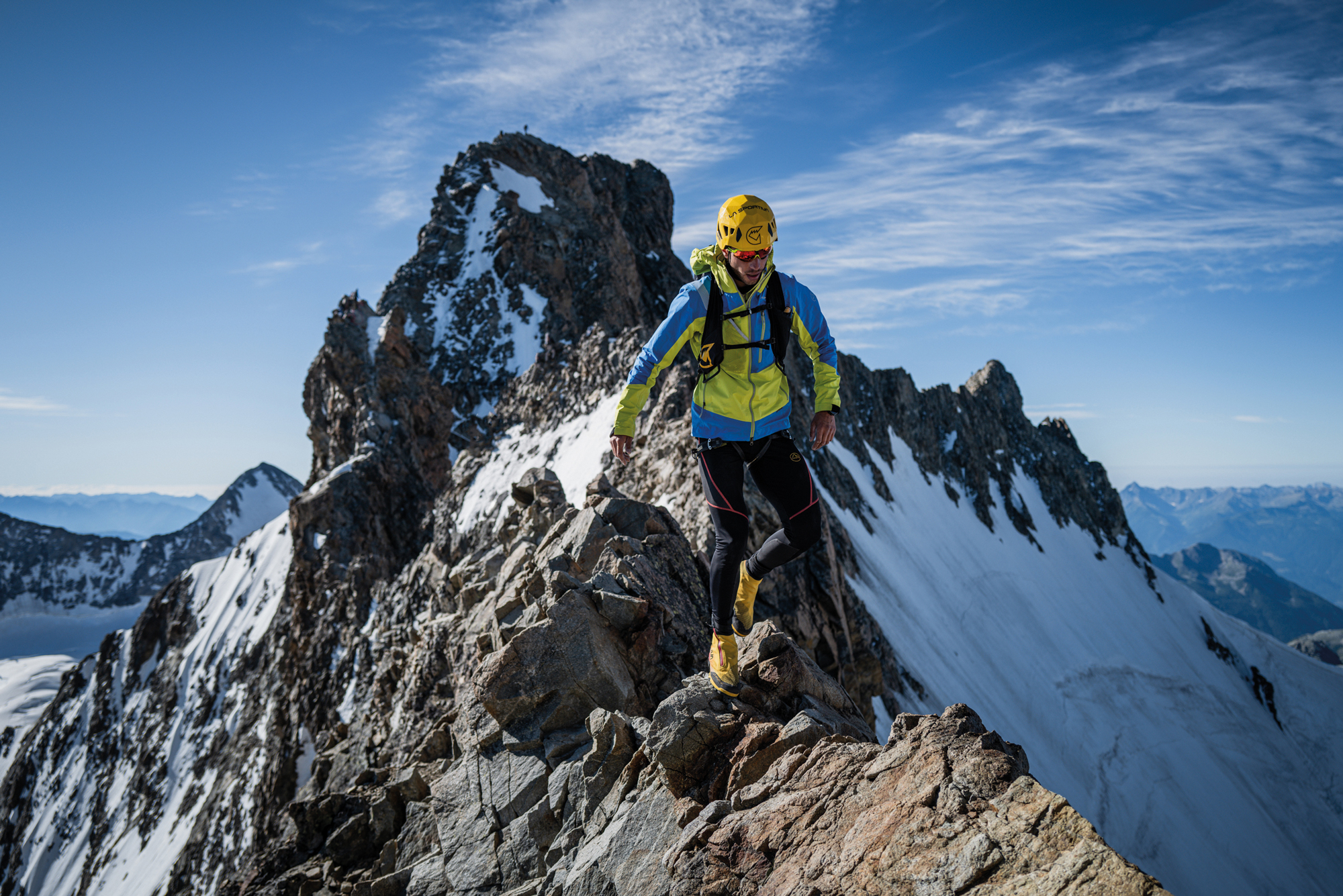
Let’s talk about safety. How safe (or dangerous) is it to move so fast in the mountains?
For me, being fast in the mountains is synonymous with safety. Nowadays, with the super light and performing equipment that companies are able to provide us athletes, traveling fast in the mountains means spending less time in danger. Going fast alone is a personal and, if you will, selfish aspect. However, the emotions multiply. The best feeling I had during my FKTs was in the most technical points of the climbs, because it was as if I had entered a bubble: my mind was completely focused on what I was doing. Pure adrenaline. Then I also think that sharing mountain routes with friends, as a rope team, is something truly unique. It is up to each of us to decide how to face mountain experiences, there is no right or wrong but only what makes us feel good.
Do you see Fast & Light as a descendant of mountaineering or do you think they are two activities running on parallel tracks?
Fast & Light can be a descendant of mountaineering, especially if we consider the research and continuous development of the equipment carried out by companies. Mountaineers have always looked for new challenges and technology allows this activity to take on ever new facets. Fast & Light is a mountaineering style that encompasses not only the technical skills but also the physical and mental skills of mountaineers.
Tell us about the equipment and shoes with which you have tackled these climbs.
The boot I used is called Aequilibrium Speed, designed and developed by La Sportiva in collaboration with us ambassadors specifically for this style of fast climbs. In the development phase, other athletes and I gave our feedback in order to create a very light but at the same time performing boot on mountaineering terrain. I think it can be a shoe used above all for classic routes that do not require particular technical difficulties, even by people who are approaching the world of mountaineering for the first time.
Answer a question you would ask yourself.
How far could I reach in the next few years in this Fast & Light style and what is my true identity in this immense environment called mountaineering? The mountain is called Matterhorn. The record is of His Majesty Kilian. Will I ever be able to live up to such a difficult goal?
